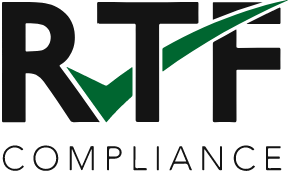Portable Appliance Testing FAQs
What is Portable Appliance Testing?
Portable appliance testing (PAT) is a safety check for electrical appliances and equipment. It’s crucial to make sure they’re safe to use. While you can spot most issues by looking at them, some problems require testing. Visual inspection is vital because not all defects can be discovered through testing alone.
A quick check by the user with some training and a checklist can be helpful for regular maintenance. But, depending on the equipment and its usage environment, a qualified person may also need to perform more detailed visual inspections and testing at specific intervals.
Is Portable Appliance Testing A Legal Requirement?
While there’s no specific law that directly mandates Portable Appliance Testing (PAT) for employers, it’s highly recommended to conduct regular PAT testing to ensure compliance with various safety regulations. Several regulations set safety standards for workplaces that indirectly require maintaining electrical appliances for employee safety. These regulations include:
- Electricity at Work Regulations 1989: These regulations pertain to using electricity in the workplace and assign responsibilities to both employers and employees. They emphasize the need to check and maintain electrical systems and appliances to prevent potential dangers, which can involve PAT testing.
- Provision and Use of Work Equipment Regulations 1998 (PUWER): PUWER legally requires workplace electrical equipment to be suitable for its intended use, ensuring that electrical appliances are safe to operate. PAT testing helps ensure compliance with these standards.
- Health and Safety at Work Act 1974: This significant health and safety legislation in the UK obligates employers to create safe workplaces for their employees. This includes ensuring that equipment and appliances used in the workplace do not pose hazards. PAT testing can be a useful tool for checking compliance with this act.
- Management of Health and Safety at Work Regulations 1999: These regulations detail the steps employers should take to manage employee health and safety at work, building upon the Health and Safety at Work Act (1974). Employers are encouraged to conduct risk assessments, which may involve PAT testing as a means of controlling potential hazards.
To efficiently address these regulations, it’s advisable to schedule regular PAT testing. This ensures that you meet safety standards and can provide evidence of testing in case of accidents. PAT testing is an effective way to identify potential electrical faults and defects before they escalate into more significant problems or health hazards within your business.
Who is Responsible for Health and Safety Standards in the UK?
The UK’s responsibility for setting and maintaining health and safety standards for businesses primarily lies with the Health and Safety Executive (HSE). The HSE monitors and inspects businesses, often in collaboration with local authorities and insurers, to ensure that safety standards are met.
The HSE expects that Portable Appliance Testing (PAT) will be regularly conducted on relevant appliances in workplaces. Failure to adhere to these safety standards can result in fines of up to £20,000 if it’s found that the regulations, as mentioned earlier, are not being met.
In cases of more severe violations related to these regulations, serious prosecution may occur, potentially leading to imprisonment and unlimited fines. This emphasizes the importance of businesses in the UK complying with health and safety standards, including PAT testing, to ensure the safety of their employees and avoid legal consequences.
https://www.hse.gov.uk/electricity/faq-portable-appliance-testing.htm
What Should Be Tested?
Portable appliances that need testing include any appliance that uses a flexible cable or plug and socket. This means that if there is an appliance that has a plug that is connected to a wall socket or generator, it should be PAT tested.
Equipment that should be tested include items such as electric drills, PCs, monitors, printers, kettles and larger pieces of equipment such as photocopiers and vending machines. Any cordless power tool would not need to be PAT tested. However, its associated battery charger that plugs into the wall would need to be tested.
Larger, seemingly non-portable items, that nevertheless require testing include such items as heated towel rails and built-in dishwashers. These items qualify as portable because they also plug into a power source.
Power cords to IT equipment are required to be tested separately from the equipment they power as they are held to a different standard. Cable extensions are also tested as they are considered among the most common sources of safety hazards.
In advance of the testing of an item of equipment, the construction class should be determined so that the appropriate tests can be applied. Equipment usually falls into three basic classes, namely Class I, II or III.
Class I equipment is connected to the protective conductor to prevent exposed conductive parts becoming live should there be a failure in the basic insulation.
Class II equipment is constructed so that protection against electric shock does not rely only on basic insulation. Class II equipment is frequently described as “double insulated” and should carry the symbol.
Class III equipment protects against electric shock through a supply from a separated extra-low voltage source (SELV).
How often equipment is tested depends upon its type and the environment it is used in. A power tool used on a construction site, for example, should be examined more often than a lamp in a hotel bedroom.
